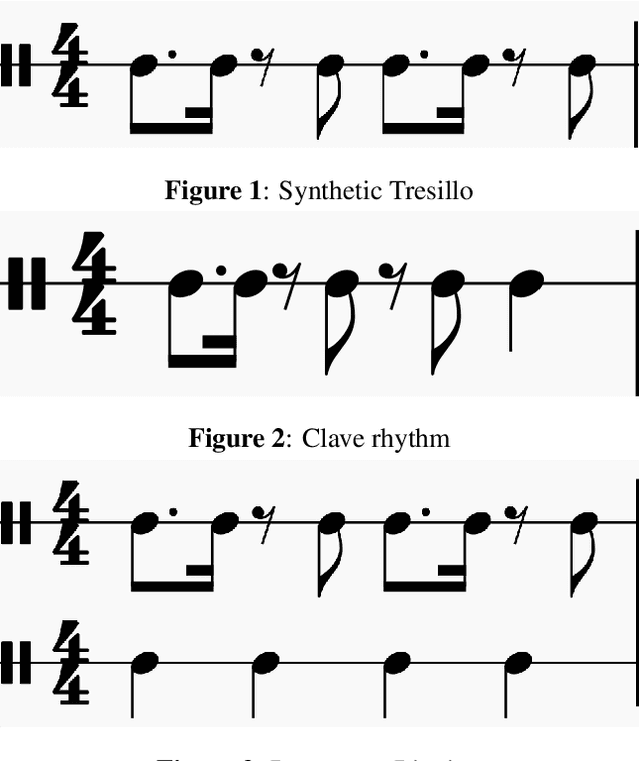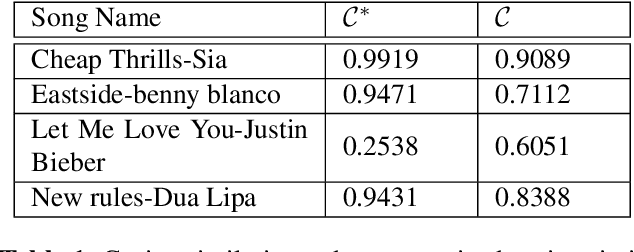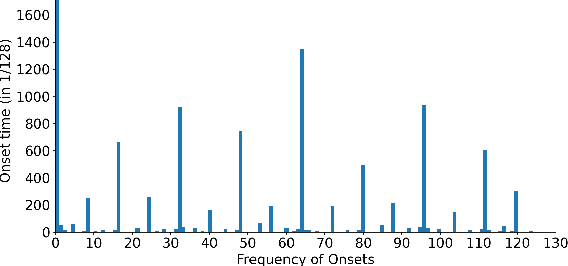Pushkar Jajoria
Text Conditioned Symbolic Drumbeat Generation using Latent Diffusion Models
Aug 05, 2024Abstract:This study introduces a text-conditioned approach to generating drumbeats with Latent Diffusion Models (LDMs). It uses informative conditioning text extracted from training data filenames. By pretraining a text and drumbeat encoder through contrastive learning within a multimodal network, aligned following CLIP, we align the modalities of text and music closely. Additionally, we examine an alternative text encoder based on multihot text encodings. Inspired by musics multi-resolution nature, we propose a novel LSTM variant, MultiResolutionLSTM, designed to operate at various resolutions independently. In common with recent LDMs in the image space, it speeds up the generation process by running diffusion in a latent space provided by a pretrained unconditional autoencoder. We demonstrate the originality and variety of the generated drumbeats by measuring distance (both over binary pianorolls and in the latent space) versus the training dataset and among the generated drumbeats. We also assess the generated drumbeats through a listening test focused on questions of quality, aptness for the prompt text, and novelty. We show that the generated drumbeats are novel and apt to the prompt text, and comparable in quality to those created by human musicians.
Towards a computational definition of the tresillo rhythm and its tracing in popular music
Sep 21, 2021



Abstract:This paper discusses the use and popularity of a rhythm, which henceforth is referred to as "Tresillo rhythm". We first define and formalizes the Tresillo rhythm. Given a mathematical representation of the rhythm, it is then traced in the US Billboard Top 20 Charts of the last 20 years. To detect and determine the use of this rhythm in a song, we compute the similarity of a song with this rhythm. The calculated similarity, then indicates how similar the rhythm of a pop song is compared to the prior defined Tresillo rhythm. To assert and cross-validate the computer rhythm similarity, two different formalizations of the Tresillo rhythm have been compiled and several different approaches to calculated rhythm similarities have been tested and compared. This similarity measure is then used to do an empirical study on the usage of the Tresillo rhythm in the US Billboard Top 20 Charts of the past 20 years (1999-2019). Finally, we argue about some of the possible reasons for the observed trend.
 Add to Chrome
Add to Chrome Add to Firefox
Add to Firefox Add to Edge
Add to Edge